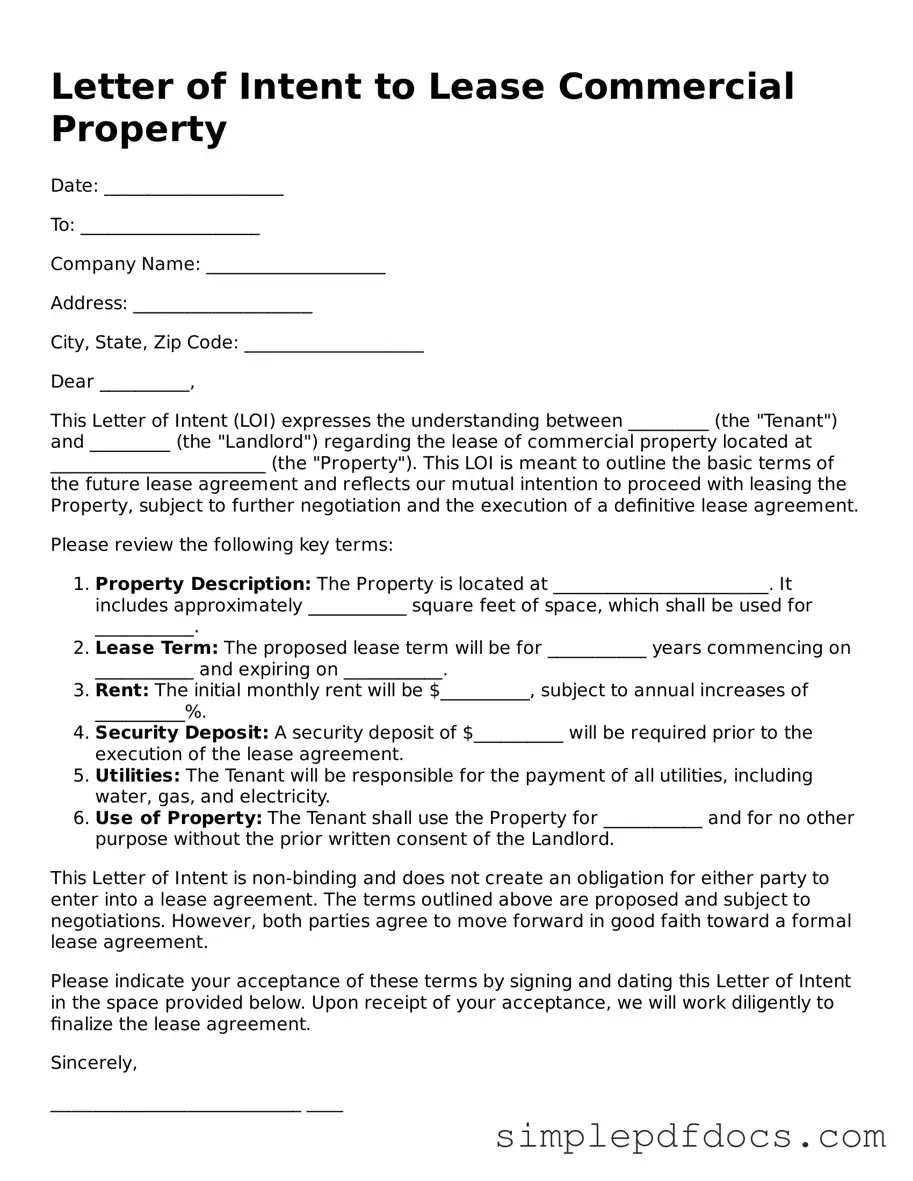Attorney-Approved Letter of Intent to Lease Commercial Property Form
The Letter of Intent to Lease Commercial Property is a preliminary document outlining the key terms and conditions that a prospective tenant and landlord agree upon before entering into a formal lease agreement. This form serves as a roadmap for negotiations, helping both parties clarify their intentions and expectations. Understanding this document is crucial for anyone looking to lease commercial space effectively.
Get Document Here
